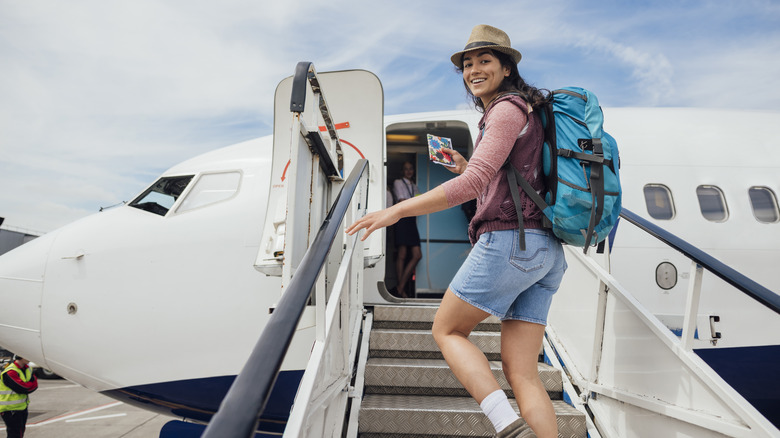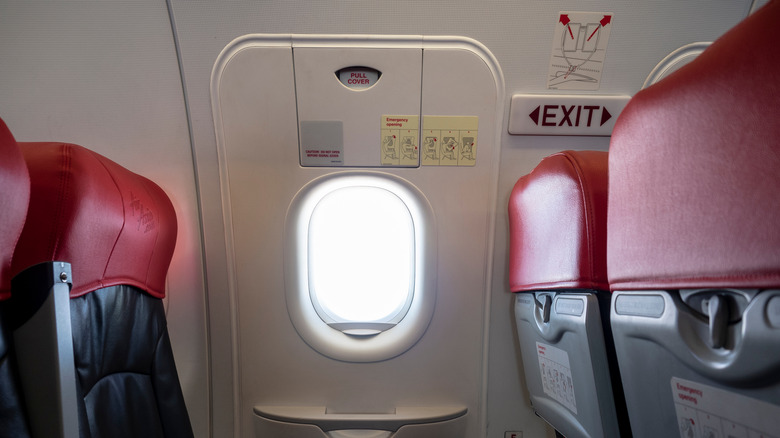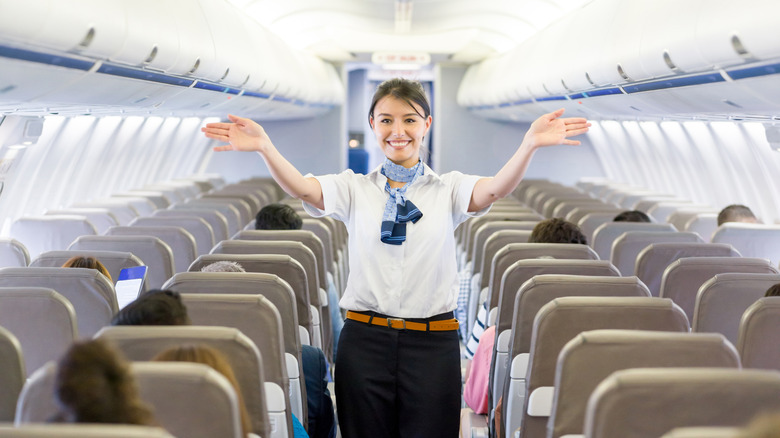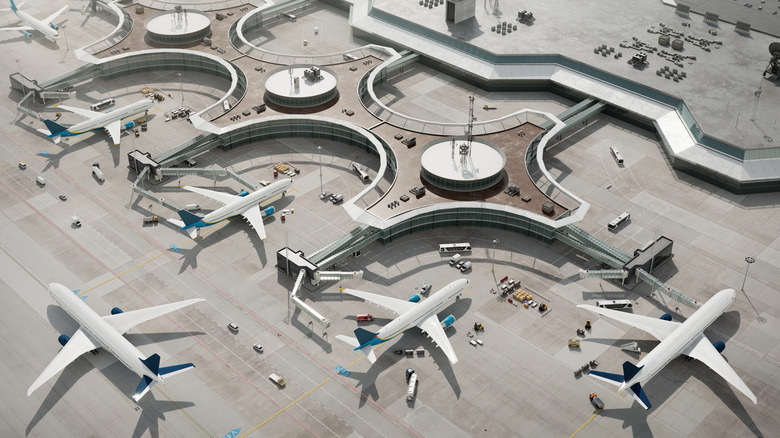The Top 3 Things The Pilot Wishes Every Commercial Airline Passenger Would Do
In 2024, an expected 9.4 billion passengers will take to the air on scheduled commercial flights. The vast majority of these passengers will reach their destinations safely — only re-establishing that flying remains one of the safest modes of transport. And while most of the responsibility for a safe, uneventful flight lies with aircraft companies, airlines, and the ancillary staff that form the backbone of the aviation business, it goes without saying that passengers, too, have a smaller, but equally vital role to play in making flights safer, more enjoyable, and as stress-free as possible.
In fact, it doesn't take a genius to figure out how to conduct yourselves while inside a giant metal tube with 200 frustrated co-passengers. While following the correct aircraft etiquette is very important, merely being a better version of yourself while inside a plane should not be your only focus. There are several things about commercial aviation that passengers should ideally be aware of before showing up for their flights. Some of these are things even commercial airplane pilots want passengers to do once inside a plane.
How do we know? Well, we asked retired Captain Richard Levy what the top three things he wished his passengers would do every time they boarded a plane were. For those wondering, Captain Levy is a thoroughbred air industry veteran with 41 years of experience working at a major U.S. airline and knows the aviation industry inside out. He currently works as a simulator instructor and runs Aviation Expert Consulting, an aviation consulting firm.
Emergency exits are important, memorize their locations
Emergency exits exist for a reason and are designed to help passengers quickly evacuate from an aircraft during emergencies. According to Captain Levy, it is crucial, therefore, to make a mental note of where the closest emergency exit is from your seat. In the event of an unforeseen emergency, this seemingly simple thing could be the difference between life and death.
On smaller narrowbody aircraft, the emergency exits are usually located over the wings and at the rear end of the plane. Memorize their locations, and also note which of these exits are the closest to your seat. You can also count the number of rows between your seat and the emergency exit so that you can make a dash for the emergency exit and know where you are, even in situations of zero visibility.
On larger widebody aircraft, emergency exits may not be directly visible — especially when you are in a middle row. On such planes, make a mental note of the closest emergency exit to you while boarding the aircraft or while making a dash toward the washroom.
Emergency exits aren't hard to find, given that they are clearly marked with signs, so this is not a particularly complicated task. Another way of finding your way to an emergency exit would be to follow the floor-level lights (or glowing strips) that are a standard feature on all modern-day passenger planes. These strips glow in the dark and will guide passengers to their closest emergency exit during emergencies.
Pay attention to all safety briefings
It is mandatory for airline companies to perform a pre-flight safety briefing before every take-off. What is not mandated by law, however, is for passengers to pay attention to this crucial safety-focused aspect. According to Captain Levy, paying close attention to the safety briefings before every single flight is a crucial factor that many passengers do not give due importance.
While first-time fliers are more likely to listen to these safety briefings with great intent, frequent fliers tend to ignore this very important aspect because they have been hearing it for years and often think they know everything there is to know. While it's true that frequent fliers do not need a lesson on how to buckle (and unbuckle) their seatbelts each time they fly, they certainly need to listen to instructions on several other safety-related aspects carefully.
For example, most frequent fliers may not be familiar with the locations of the life vests and the procedure that needs to be followed while inflating them. They may also not know how to use the oxygen masks that drop during emergencies. Pre-flight instructions are also important because the flight attendants also clearly let passengers know where the closest emergency exits are, and given that people may fly onboard different aircraft types and classes, the locations of the emergency exits would change.
Aside from pre-flight safety briefings, the cabin crew and the captain may also make periodic safety-focused announcements mid-flight. Captain Levy maintains that these announcements should also be treated with the same level of importance as the pre-flight announcements.
Don't fret over the aircraft type
It's not just you; it's quite common for people to feel anxious before an impending flight. And if you're like us, you may also end up binge-watching several episodes of "Air Crash Investigation" the night before your flight, only to realize that your next flight will use the same aircraft type that was involved in one of those crashes.
While it is understandable that such information might be unsettling for some, the fact remains that flying — statistically speaking — remains one of the safest modes of transportation currently in existence. Looking at IATA (International Air Transport Association) data from 2022, we know that there were just five fatal accidents among a total of 32.2 million flights.
This translates to a fatality risk of just 0.11, which is much lower compared to other common modes of transportation. In fact, you should be more concerned about the time you spend inside road-based transportation methods like cars, two-wheelers, and buses, which are statistically more likely to end up in a fatal accident than an airplane.
That being said, Captain Levy doesn't discount the fact that flying involves some risk. According to him, though, it doesn't matter whether the plane you're inside is a Boeing 737, Airbus A320, a Boeing 747, or an Airbus A380.
"There is a risk to walking across the street. There is a risk to driving your car. There is a risk to climbing a ladder. And there is a risk to creating worry and anxiety in your mind and body. Go ahead, fly and relax," says Captain Levy.



